| Author |
Message |
    
raa
Member
Username: raa
Post Number: 26
Registered: 02-2007

| | Posted on Sunday, July 17, 2011 - 07:28 pm: | 




|
I had a Tuttle (ca.1904-1908) follow me home last fall and after a little repair got it in the water this week. The engine runs and cooled just fine but a few days later the water flow decreased to just barely enough. I re-turned the check valves which now show a faint mark indicating a good seal on both valves. The inlet is pointing forward and is not plugged with weeds etc. The plunger pump has new packing and is snug and not showing any water leakage. The water flow seems to vary sometimes showing a good flow and other times just a dribble. Does anyone have any ideas as to the cause of low flow?
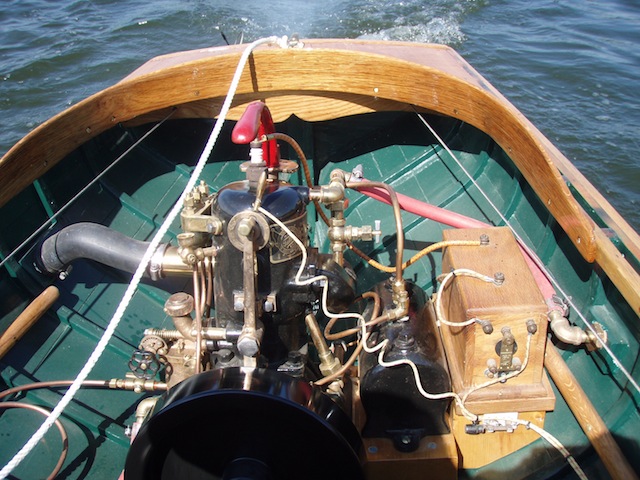
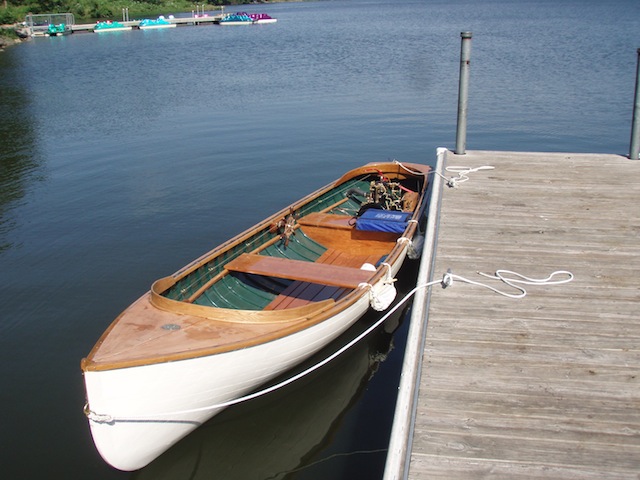
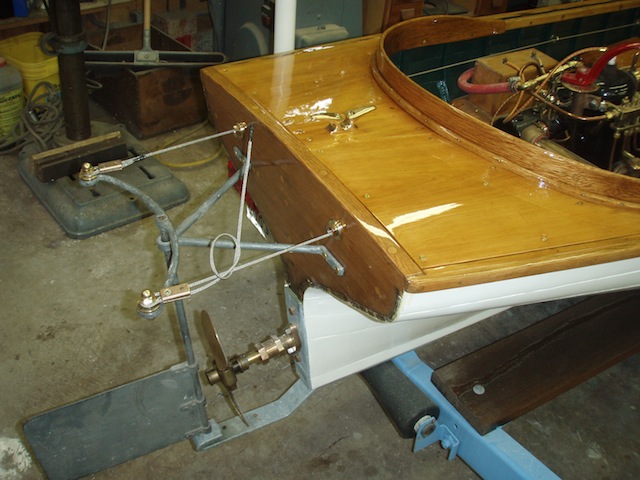 |
    
jb_castagnos
Senior Member
Username: jb_castagnos
Post Number: 606
Registered: 07-2002

| | Posted on Sunday, July 17, 2011 - 08:55 pm: | 




|
Did a little work on it huh Dick, show us a before picture. I saw it mid way through and you had more than a little work left. It sure is a beautiful boat. What's the valve on the water line, hard to tell from the angle of the picture, can you send more pictures of the plumbing? |
    
raa
Member
Username: raa
Post Number: 27
Registered: 02-2007

| | Posted on Sunday, July 17, 2011 - 09:35 pm: | 




|
That thing that looks like a faucet handle is a control on the mixer which limits the stroke of the intake check valve. It has about 8 or 10 detent positions to control the amount of stroke of the valve.
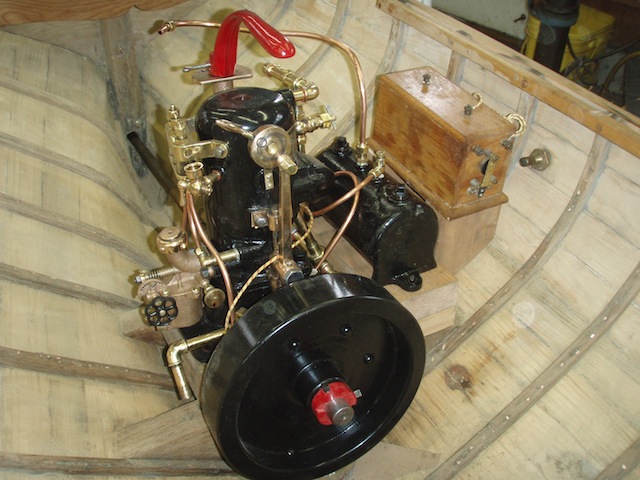
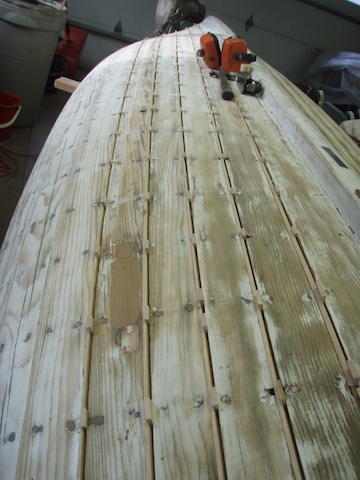
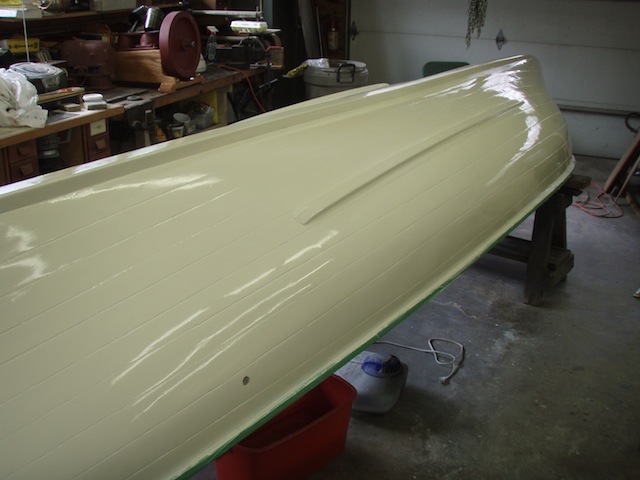
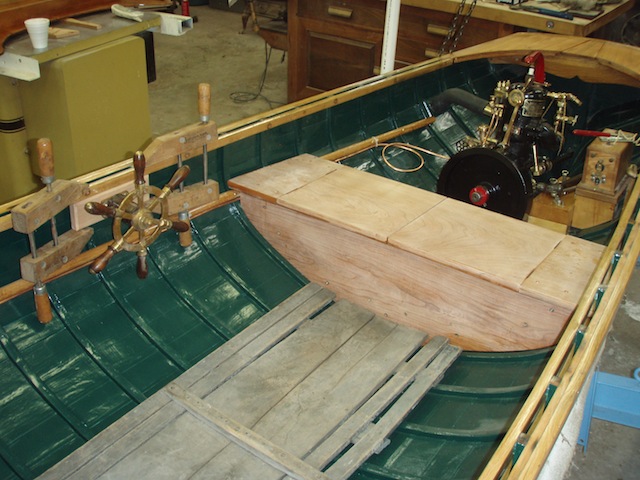 |
    
jb_castagnos
Senior Member
Username: jb_castagnos
Post Number: 607
Registered: 07-2002

| | Posted on Sunday, July 17, 2011 - 09:48 pm: | 




|
Dick, the valve I'm talking about is on the port side, looks like it may be a bypass for the water outlet. |
    
raa
Member
Username: raa
Post Number: 28
Registered: 02-2007

| | Posted on Sunday, July 17, 2011 - 10:03 pm: | 




|
That is what it is. It allows water to either go in to the exhaust and cool it or go over board on the port side or a mix of the two. The handle on this valve is a horse shoe nail which is kind of neat. |
    
billschaller
Senior Member
Username: billschaller
Post Number: 430
Registered: 12-2003

| | Posted on Monday, July 18, 2011 - 11:21 am: | 




|
it's a simple system, so there are not many choices.
air leak suction side of pump
water leaking past piston
check valve leaking.
plugged pipe.
the fact that it is variable makes me thing it's the check valve. if it can be done, put in a second check valve. |
    
raa
Member
Username: raa
Post Number: 29
Registered: 02-2007

| | Posted on Monday, July 18, 2011 - 11:55 am: | 




|
Thanks Bill I will look into it. I straightened the checks this am so they are straight up and down will try it out in a few days. I agree that the flow being variable seems to point toward the checks.
Thanks
Dick |
    
bcm
Member
Username: bcm
Post Number: 23
Registered: 11-2009
| | Posted on Monday, July 18, 2011 - 03:29 pm: | 




|
As the cooling water flow changes without explanation, I suggest you focus your attention on the suction side check valve.
During the time that the pump piston moves to push water into the engine, at the same time the suction side check vale closes because of delivery pressure. This closure is not instantaneous so during the time to close, until the valve is seated, some cooling water is always pushed back into the suction line. If as a result of age related wear, the valve is not free to close or is slow to close then it may hang up, thus no flow, or close slowly thus reducing flow.
If the valve is worn beyond repair, it can be replaced by an in line check that is readily available at plumbing outlets.
An image is attached showing an in line check installed in the suction line of a St Lawrence. This was done in order to increase the cooling water flow as the in line check valve closes much faster than the St Lawrence ball check. The original suction side ball was removed. The purpose was to cool the exhaust gases as much as possible so as to eliminate any visible exhaust due to condensed water vapor. The installation was a success and resulted in a clear, invisible exhaust.
Barry
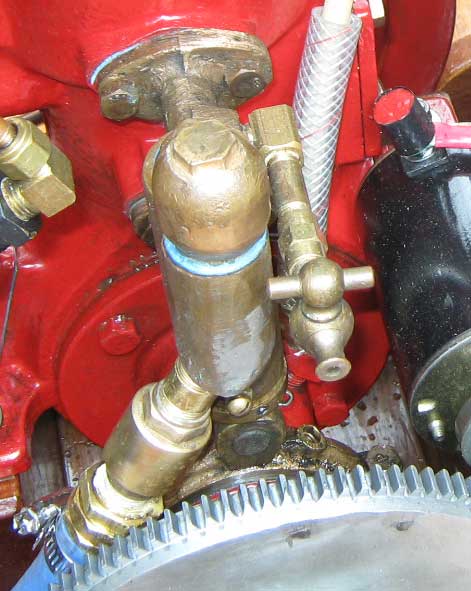 |
    
bruce
Senior Member
Username: bruce
Post Number: 271
Registered: 07-2002
| | Posted on Monday, July 18, 2011 - 03:35 pm: | 




|
If their not spring action checks- the discharge check might not work the best if mounted vertical. |
    
laurie_d
Senior Member
Username: laurie_d
Post Number: 104
Registered: 10-2009
| | Posted on Monday, July 18, 2011 - 07:24 pm: | 




|
Gentlemen, It is probably a very low risk but also consider whether the water intake intake is sucking air (from under the boat as well as the hose inside the boat as previously discussed). The design of such boats and the fitting location will normally prevent that but the problem of flucuating flow indicates it could be more than just the valves. Regards from down under. |
    
raa
Member
Username: raa
Post Number: 30
Registered: 02-2007

| | Posted on Monday, July 18, 2011 - 10:07 pm: | 




|
Many thanks for all the good ideas. What is the maker of the inline check? That seems to be a easy fix especially the inlet side. The inlet port
is quit a ways under the boat and is in the original location as far as I can tell and the thru hull fitting is facing forward so as to get a ramming effect. |
    
bcm
Member
Username: bcm
Post Number: 24
Registered: 11-2009
| | Posted on Tuesday, July 19, 2011 - 09:58 am: | 




|
Apollo in line check valve .
http://www.apollovalves.com/products/products.asp?sub=23
Suggest you try a 61-100 series valve available in all pipe sizes so use the size that matches the existing piping.
The apollo site has a link to locate a local distributor.
Similar valves are available from local plumbing supply outlets.
If this solves the problem then suggest you carry a spare as I have no long term experience to know if the valve will stand up. They are very inexpensive about $10.
Barry |
    
raa
Advanced Member
Username: raa
Post Number: 31
Registered: 02-2007

| | Posted on Tuesday, July 19, 2011 - 12:34 pm: | 




|
Thanks again. Will get one soon. |
    
bcm
Member
Username: bcm
Post Number: 25
Registered: 11-2009
| | Posted on Tuesday, July 19, 2011 - 01:23 pm: | 




|
Can you confirm if you are using a variable pitch prop? If you are would you comment re boat performance at various pitch settings, both forward and reverse.
thanks
Barry |
    
raa
Advanced Member
Username: raa
Post Number: 32
Registered: 02-2007

| | Posted on Tuesday, July 19, 2011 - 03:34 pm: | 




|
The variable pitch prop works great in forward,neutral and reverse. You can just inch the boat either forward or back by moving the red handle. In reverse the boat will only go to starboard or straight back if you are careful. forget going to port. This is due to the water being denser on the bottom blade I think. The red handle has a pin which can be dropped in a hole which will hold the setting --for trolling? |
    
bcm
Member
Username: bcm
Post Number: 26
Registered: 11-2009
| | Posted on Tuesday, July 19, 2011 - 03:46 pm: | 




|
Another thought re the cooling water issue.
What is the black tank at the side on the engine. It looks like a muffler, however I cannot see any connection to exhaust.
There are two small pipes connected to this tank, one appears to be connected from the water discharge after the discharge check valve to what looks like a relief valve at the black tank. Where is the second line connected?
The pictures do not show this with any certainty, however if it is a relief valve then it could be the problem.
Barry |
    
raa
Advanced Member
Username: raa
Post Number: 33
Registered: 02-2007

| | Posted on Tuesday, July 19, 2011 - 05:08 pm: | 




|
The tank is for lube oil. One of the copper lines is connected to the crankcase which has a pulsing
pressure which passes past a check ball and pressurizes the oil tank. Oil is fed from the tank to to the 3 station oilier mounted on the cylinder. The oilier feeds oil to both main bearings and the 3rd line feeds oil to the lower cylinder which accumulates in the crank sump keeping the rod wet with oil. I have run the engine on straight gas but am currently using a 30:1 mix with modern 2 stroke oil. The exhaust smokes for a minute or so and then clears up nicely.
The exhaust is currently straight out the side of the boat and has quite a bark to it,I;m hoping to find a muffler like the one I have on my Dippy which is quite effective. |
    
raa
Advanced Member
Username: raa
Post Number: 34
Registered: 02-2007

| | Posted on Monday, July 25, 2011 - 10:46 pm: | 




|
I went down to Rockford and got a 60 degree x 1/2" chamfer tool today and re cut the check valve seats and then made a lap to smooth out any chatter marks. Took the boat down to the local lake and all works great now. Thanks for all the help |


